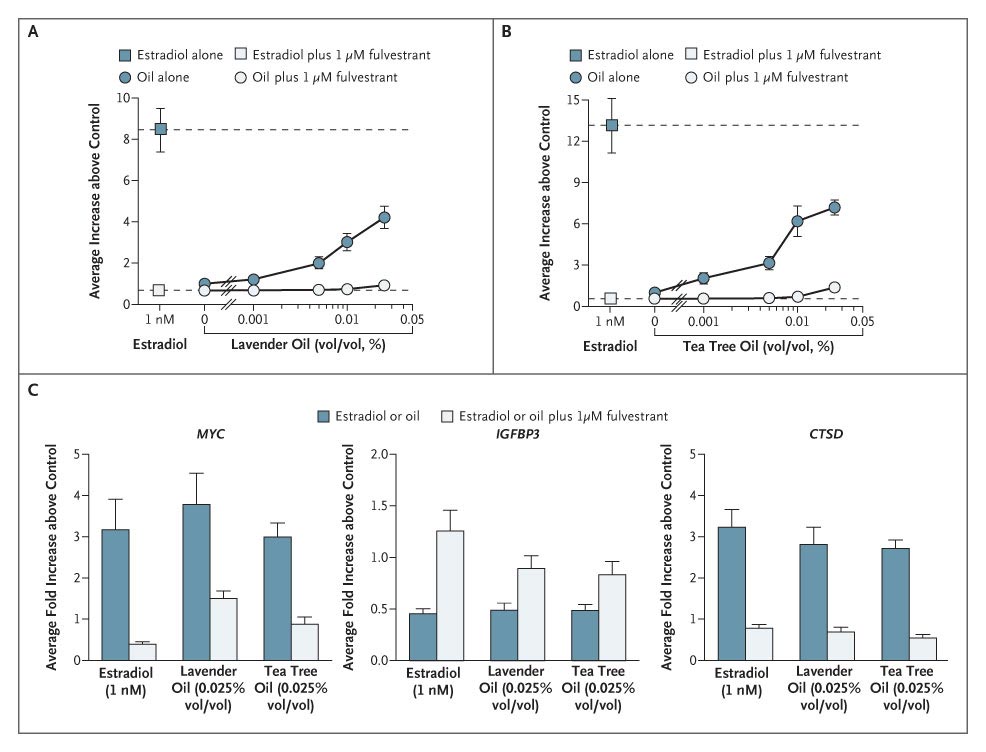
Figure 1. Estrogenic Activity of Lavender and Tea Tree Oils in Human Breast-Cancer (MCF-7) Cells.
MCF-7 cells were transiently transfected with both the estrogen-inducible 3X-ERE-TATA-luciferase (firefly) plasmid and the constitutively active renilla luciferase reporter plasmid (Promega) and treated for 18 hours with increasing concentrations of lavender oil (Panel A) and tea tree oil (Panel B) in the presence or absence of 1 µM fulvestrant. Treatment with 1 nM 17β-estradiol served as a positive control for activation of the reporter plasmid. The firefly luciferase activity was normalized to that of renilla luciferase activity and the total protein content for each sample. The results are expressed as the average (±SE) fold increase relative to the control solvent of the values obtained from independent experiments (five experiments in Panel A and four in Panel B), each conducted in duplicate. The dashed line at the top represents treatment of the cells with estradiol alone, and the dashed line at the bottom represents treatment of the cells with estradiol in the presence of fulvestrant. In Panels A and B, for the comparison between treatment with estradiol, lavender oil (at 0.005%, 0.01%, and 0.025%), or tea tree oil (at 0.005%, 0.01%, and 0.025%) and treatment with ethanol (the solvent control) alone, P<0.001. For the comparison between treatment with tea tree oil alone (at 0.001%) and treatment with ethanol, P<0.01. For the comparison between treatment with estradiol and treatment with estradiol plus fulvestrant, P<0.01 in Panel A and P<0.001 in Panel B. For the comparison between treatment with lavender oil or tea tree oil and treatment with either of the two oils plus fulvestrant, P<0.001. MCF-7 cells were treated for 2, 6, 12, or 18 hours with dimethylsulfoxide, 0.025% (vol/vol) lavender oil, 0.025% (vol/vol) tea tree oil, or 1 nM 17β-estradiol in the presence or absence of 1 µM fulvestrant (Panel C). Real-time PCR was performed to measure the steady-state mRNA levels of MYC, CTSD, and IGFBP3. The data shown represent a single time point corresponding to the maximum 17β-estradiol–induced expression of each gene (MYC, 2 hr; CTSD, 18 hr; and IGFBP3, 6 hr). All values were normalized to glyceraldehyde-3-phosphate dehydrogenase, and each data point represents the average increase relative to the vehicle control of the values obtained from four independent experiments. In Panel C, for the comparison between treatment with estradiol, lavender oil, or tea tree oil and treatment at the same point in time with ethanol, P<0.05. For CTSD, for the comparison between treatment with lavender oil and treatment at the same point in time with ethanol, P=0.056. For the comparison between treatment with estradiol, lavender oil, or tea tree oil and the identical treatment plus fulvestrant at the same point in time, P<0.05. For IGFBP3, for the comparison between treatment with lavender oil or tea tree oil and the identical treatment plus fulvestrant at the same point in time, P=0.056.